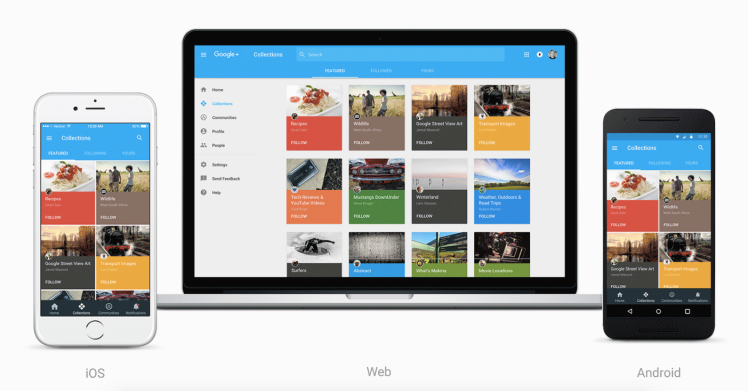Google has redesigned its Google+ social network to become more mobile-friendly and help make “life easier for people.” The first area of focus is Google+ Communities, a product that debuted in 2012 to rival Facebook Groups. Google said that an average of 1.2 million new people join a Community every day.
The next focus is around Collections, which was released in May. This feature brings together aspects of Facebook and Pinterest to let people share content easily. Content is shared on cards, and you can select different boards to share the content to.
The focus on mobile is especially interesting as the company tapped Luke Wroblewski, a well-respected interface designer and founder of the polling startup Polar, which Google acquired in 2014. He has been working to make the design more accessible and consistent across devices, and updated apps for iOS and Android are supposed to roll out “in the coming days.”
Wroblewski wrote on his Google+ account that the redesigned site isn’t limited to just Collections and Communities; other improvements include streamlining how you post, search, connect, and follow topics and people. And, of course, performance issues are always being addressed.
For those who are interested in giving the new Google+ a try, sign into your account and click the “Let’s go” link when prompted. If you’re not a fan of the new design, just click back to view the classic mode.
Much has changed since the inception of Google+ years ago: It no longer has a shared circles feature, no longer requires you to use your Google+ profile as the core identity platform, has removed its commenting from YouTube, and has extracted its popular Photo service, which has grown quite rapidly on its own.
VentureBeat's mission is to be a digital town square for technical decision-makers to gain knowledge about transformative enterprise technology and transact. Learn More

